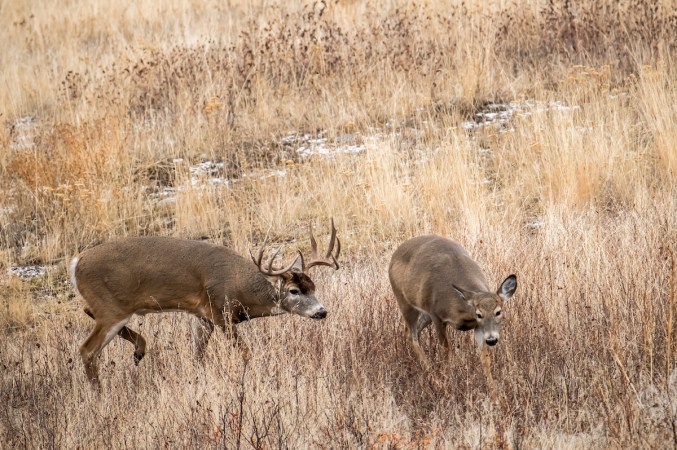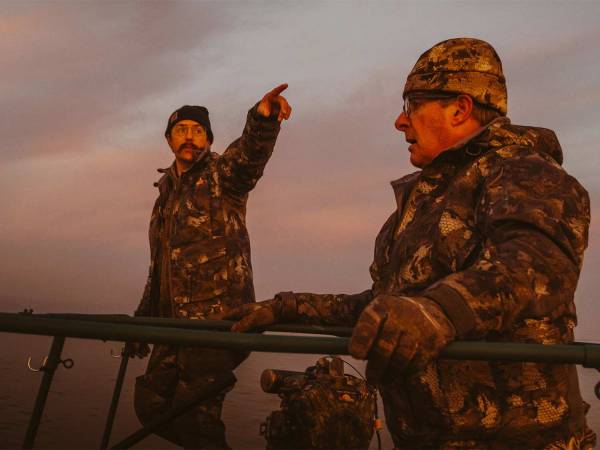Teaching someone to hunt or fish isn’t easy. We’re talking about immersing the person into a deep, nuanced passion that could define how they view the natural world around them. The key is to take it one step at a time. So we compiled a list of tips tactics, and ideas on how to be a better hunting and fishing mentor. Read on, and then grab a new hunting and fishing buddy and hit the field. It’s work, but damn good work. We promise it’ll be some of the most fun you have outdoors all year.
1. Show and Tell
Have your mentee bring a piece of gear from their own family. Chances are good they had a relative, near or distant, who was a hunter, and if they have a working gun, encourage them to bring it to you so you can inspect its field-worthiness. If they have a passed-down knife, let them carry it along. Heirloom gear can create a strong connection to family members they may have never known but with whom they share a common purpose and identity. —Andrew McKean

2. Spool a Reel
Nothing turns newbie smiles to frowns faster than nasty backlashes that cut into fishing time—or worse, require cutting off three-quarters of that fresh line they just purchased. To minimize frustration, teach a novice how to spool a reel properly. Explain how to avoid twist by orienting the line spool correctly when filling a casting reel versus a spinning reel. Show them the phone-book or oven-mitt trick to keep proper tension. Grill them about the perils of overfilling the spool. Lure presentation and casting tips are important, but it will be harder to get to that fun stuff if the poor dude is constantly dealing with bird’s nests. —Joe Cermele
3. Go Paperless
Punching paper is a necessary part of target shooting, but ringing steel, making Tannerite go kaboom, swinging gongs, and shooting other targets that flop over, spin, or otherwise react is much more enjoyable for a new shooter. If you’re on a budget, just pin some balloons to a target backer. —John B. Snow
4. Hold a Leg
The best way to learn a new skill is to do it. So don’t guide rookies through everything it takes to hunt an animal only to rob them of field dressing. Offer guidance as the newbie makes cuts. Yes, it will be sloppy, and, yes, it will take a while. But they’ll be better equipped to tackle the task independently next time. —Natalie Krebs
5. Grade Some Stands
So you’ve taken someone to your lease, shown them to your stand, and helped them butcher their first deer. They love it and ask, “Do you have anything going on next fall?”
To keep your favorite stand from becoming their favorite stand, it’s time for a lesson. Start with a post-season review of why you put your setup where you did. Point out trails, prevailing winds, terrain funnels, food sources, buck sign—things that might seem obvious to you but might be abstract to them. Be sure they understand the basics of treestand safety. Then tell them to find a place to hunt, hang a stand themselves, and call you when they’re finished.
Then, you can help them make it better. As any good deer hunter knows, sometimes moving a stand to a different tree just 50 yards away makes all the difference. Once your protégé gets a shot from an ambush they’ve set themselves, you’ll have a genuine deer hunter on your hands. —Will Brantley
6. Let ‘Em Do the Yelping
Rookie turkey hunters are usually on the gun first: “Sit still and don’t shoot till I tell ya.” Which is all fine and good, but being just a shooter sometimes takes a lot of the fun out of the hunt itself. So, after you get your newbie a longbeard, have them call one in for you. They’ll learn what it takes to work in a tom. —A.R.

7. Call, Record, Replay
New callers are often so focused on the correct technique of holding the call or positioning their lips that they miss the obvious stuff—like proper tone and cadence. Rather than say, “That sounds like crap,” record the new caller’s sounds and then compare them to the sounds of live critters (there are recordings aplenty online). Their calling will improve quickly. —W.B.
8. Volunteer to Be a Hunter’s-Ed Instructor
When I moved to New York, I discovered the state required a bowhunter education course on top of the usual hunter’s-ed certification. So, with several bow seasons already behind me, I signed up. The catch? Every class within a five-hour radius was full, and I spent a whole weekend traveling to attend a one-day session. The instructors were a mixed bag. The head teacher seemed experienced and helpful, if resigned to spending his Saturday with us. Another instructor took advantage of the captive audience to share his political beliefs, with great volume and conviction, to the mostly preteen students. For the practical portion of the test, we filtered outside to learn about treestands. I noticed a third instructor had hung the bottom section of a climber upside down.
It wasn’t all bad, but the experience was memorable enough that I decided to volunteer as an instructor. The game warden who conducted my background check confided that the state is so hard up for hunter’s-ed instructors that hunting experience is no longer a requirement for teaching the class.
Amid all this absurdity are a few takeaways: Plenty of people want to learn to hunt, but there aren’t enough classes offered in high-demand areas, such as cities. And there are some but not enough competent instructors who can teach and inspire new hunters instead of just dragging them through an obligatory course. —N.K.

9. Plant Plots
Upon climbing into a shooting house and staring across a green field full of deer, it can be tempting for a new hunter to think, This is easy.
Nip that sentiment in the bud by taking them out the following August for a few days of hauling fertilizer, picking rocks, wrestling farm implements, and driving tractors over unseen wasp nests. The field might glow a little greener to them, and the word “easy” will have been removed from the lexicon. —W.B.
**
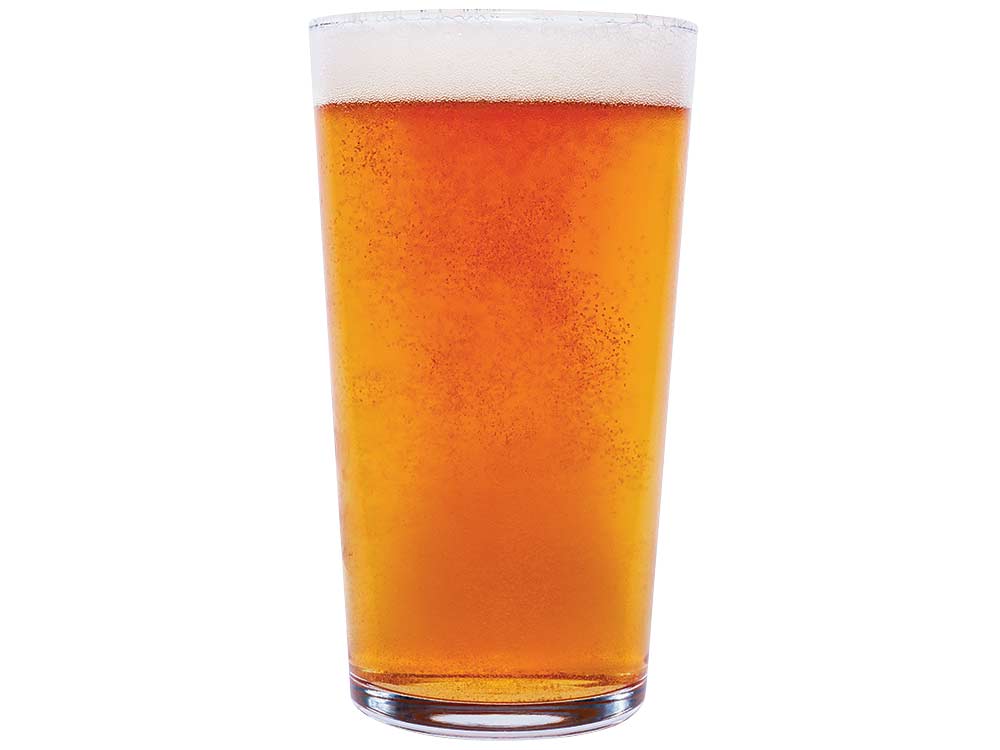
10. Go to Pint Night
Backcountry Hunters and Anglers hosts chapter Pint Nights all around the country. It is what it sounds like—a bunch of outdoorsmen get together to drink beer. You don’t have to be a member to attend, and it’s a welcoming atmosphere. BHA is a little younger (and, dare I say, cooler?) than some of the traditional hunting groups. —A.R.

11. Build the Best Beginner Rifle
I’ve taught a lot of people to shoot over the years, and once a person is ready to step up to a centerfire cartridge, I’ve found that the best rifle for the task is a properly configured AR-15. The ideal AR has a collapsible stock, is topped with a red-dot or reflex sight, and, if legal, has a suppressor on the muzzle. No rifle is more comfortable or shooter-friendly.
With the sight mounted in the middle of the receiver, there’s no way for the shooter to get bit by the optic, and the unlimited eye relief avoids the frustration of trying to align the eye with a scope.
With a collapsible stock, the rifle can be fit quickly to the shooter’s dimensions. You’ll know the rifle is right when the shooter has their head in a relaxed, upright position with their cheek resting on the top of the stock. If they are tipping their head over the stock to look through the optic, check their eye dominance.
A suppressor will reduce the muzzle blast, which is as big a contributor to developing a flinch as heavy recoil.
Lastly, use a 5- or 10-round magazine so that the rifle rides the shooting rest better. —J.B.S.
Read Next: 4 Essays on Mentoring New Hunters and Anglers
12. Find the Edge
Before your shotgunning protégé calls for a clay target, have them say aloud to themselves, “Front edge.” Those two words, right before they say “pull,” will help their eyes focus hard on the front edge of the clay target in flight, which will make the target seem to move slower and keep them from looking at the front bead on the barrel. —J.B.S.
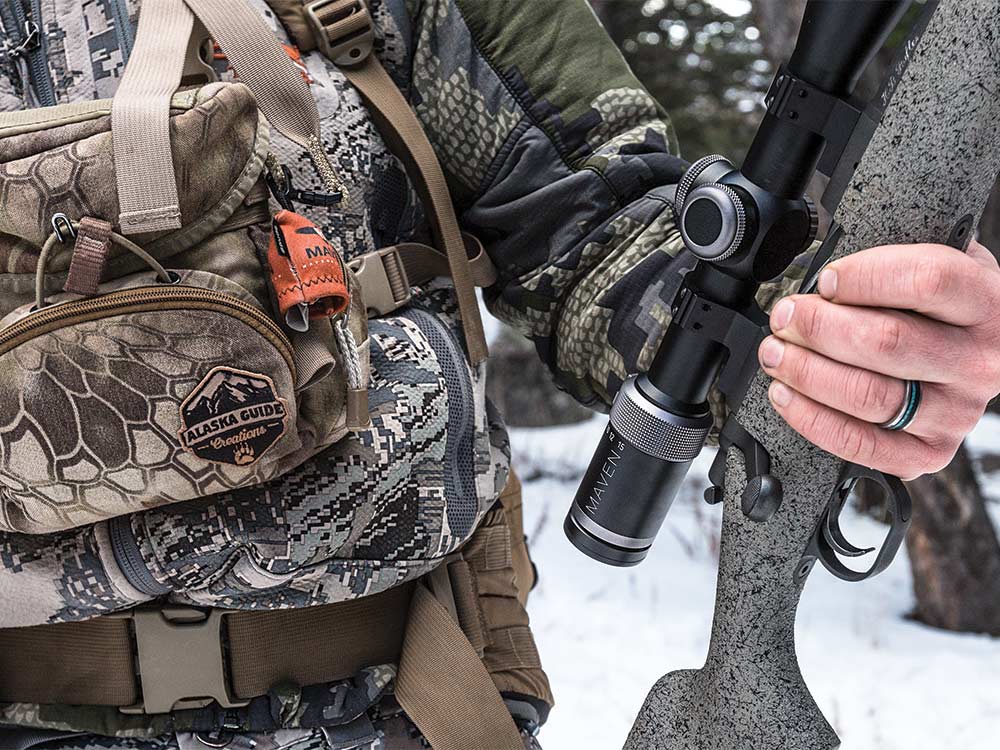
13. Treat Yourself
Have you had your eye on a new riflescope? Go ahead and splurge on an upgraded optic. And then pass your old scope along to a new shooter and help them mount it correctly on their rifle with the proper amount of eye relief. —J.B.S.
14. Make Each Encounter a Practice Session
Make the most of every close call with game. Have your mentee guess the yardage to a nearby tree, analyze the wind, and even describe where to place a bullet or arrow. You can go so far as to dry-fire (after triple checking that no shell is in the chamber) to practice breathing and trigger control when emotions are high. —A.M.
15. Give Them Time Alone
Somehow, it all worked out, and your apprentice bagged an animal. Your tendency is to celebrate the achievement and then get to work on the next stage of a hunting apprenticeship: field dressing. But slow down. This moment is full of complexity for a new hunter, and the best gift you can give is respectful space. Walk away. Fetch the vehicle, or go looking for your apprentice’s spent cartridge. Give them time to process the emotions they’re feeling, possibly a mix of elation and remorse, gratitude and pride.
This moment is one that they’ll remember the rest of their life, and it may well be the foundation for their inclination to become a mentor themselves. Without that moment of reflection, a hunt can seem all about the kill. But with a bit of time alone, the hunter can soak in their achievement, relive small moments and decisions that culminated in a harvest, and give thanks to not only the animal, but also for the experience. —A. M.
16. Fit a Bow
A new bow loses about a third of its value after leaving the shop, so a lot of new archers start with a hand-me-down. That’s fine. But to keep from developing poor habits, a new shooter needs a bow that fits. Measure draw lengths before the shopping begins, and help your protégé resist the temptation to pull too much draw weight. —W.B.

17. Hunt Small-Creek Ducks
Most new waterfowlers’ first outing is with a big crew. A bunch of diehards have found birds, and the newbie gets invited along. There are four or five gunners, a big spread, maybe a boat, a dog, and a nice blind. It’s a great time, but it’s also totally impossible for a rookie duck hunter to re-create this experience on his own. Instead, show him how to hunt small rivers and creeks, which require minimal gear. These hunts might not be barrel burners, but they’ll teach the most important elements of duck hunting: scouting and hiding. The trailer full of decoys can come later. —A.R.
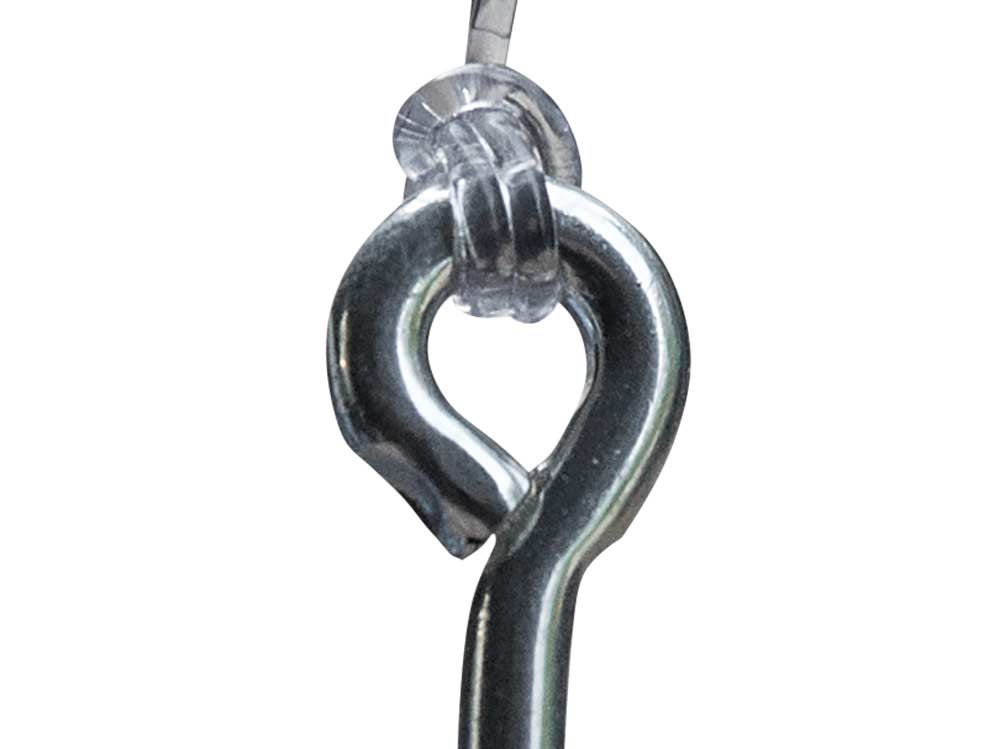
18. Teach the Palomar Knot
As far as I’m concerned, unless they’re starting out on blue marlin, a complete novice only needs to know one knot: the Palomar. It’s easy to tie, and it can be used on anything from lures to flies to the swivel needed to attach a leader to a main line. It’s practically unbreakable, which is a real confidence booster. —J.C.
19. Burn a Spot
A rookie may end up glued to your hip boots on a lot of fishing trips, and that’s a good thing. A better thing is that he or she gets out there alone. For some, that will be a fairly big leap, but you can make it less daunting by sneakily sharing your knowledge.
One of the most challenging parts of learning to fish is putting together patterns. Fully understanding how weather, flows, tides, and a plethora of other factors will help or hurt a bite are probably beyond your novice’s experience level.
So, if you check the forecast and the gauges, and they point to action in a spot your mentee can handle solo, drop them a hint—subtly. Tell them you’d love to be at location X tomorrow, but you’re too busy. If you were them, though, you’d go. You don’t even have to explain why the barometer is perfect. Let them go, let them hook up, and then let them take all the glory.
Perhaps even let them give you a little ribbing for not showing up. —J.C.
Read Next: Why We Are Losing Hunters and How To Fix It
20. Test a Rookie’s Dedication
My cousin Shawn moved from the Midwest to Colorado and wanted to get into elk hunting. A guy he worked with was a former outfitter, so he started hitting the guy up for information. Shawn’s new mentor sent him on a weekend scouting mission up a drainage that was way off the beaten path. Shawn got to the area to find a nightmare slope of deadfalls, but he fought his way up the mountain anyway.
When he topped the ridge, hours later, he found a perfect meadow loaded with last year’s elk sign.
After he reported back on what he’d found, the former outfitter showed him a much easier route to access the meadow during hunting season. He figured if Shawn was willing to climb that slope of deadfalls, he was worth spending time on. Shawn has since killed a handful of bulls out of that very meadow.
Now, I’m not suggesting that you send a total novice into the mountains on their own (my cousin was already an outdoorsman, he just didn’t know how to hunt elk). But before you give away a lifetime of hunting knowledge, make sure your protégé is dedicated enough to put that knowledge to good use. —A.R.
21. Load Their Gun (Or Don’t)
A great drill for any shooter is to have someone else load their firearm (or not). At the range, have your rookie get into position. Take their gun and load a single shell, and then have them shoot. Repeat this a few times. Then, act like you’re cycling in the next shell, but this time, leave the chamber empty. When the gun goes click instead of bang, any flinching or other flaws in their technique will become apparent, and then can be corrected. —J.B.S.










